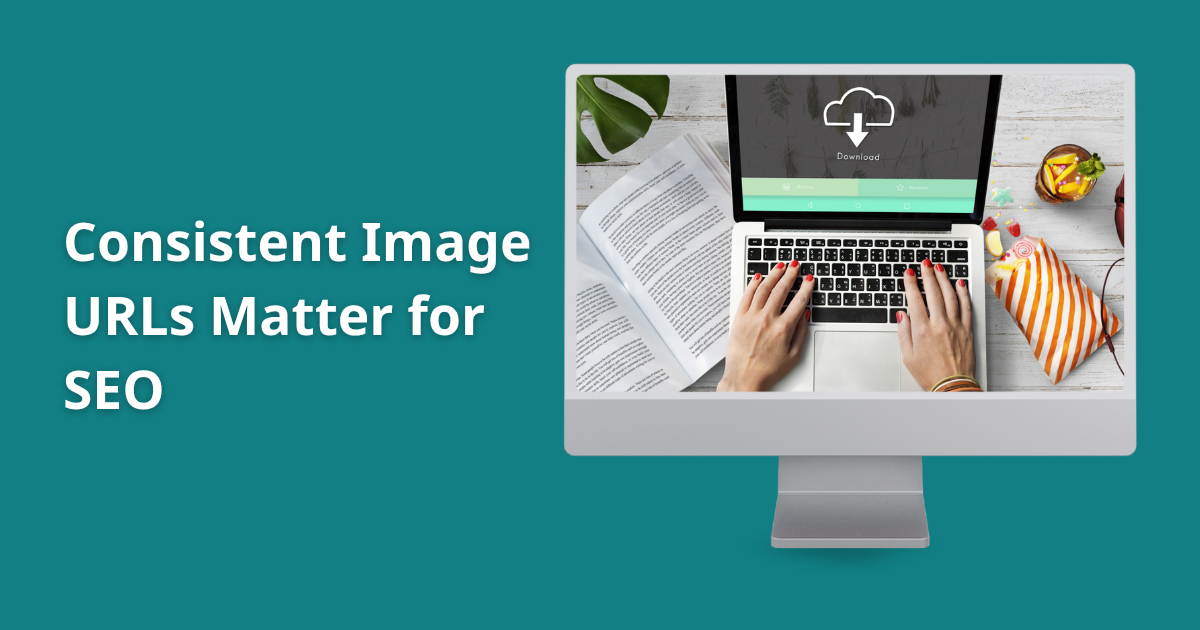Key Takeaways
- Consistent image URLs matter for SEO because they prevent duplicate crawling, helping Google index your site more efficiently and improve your search rankings.
- Reusing the same image URLs reduces crawl waste and speeds up indexing for new or updated content.
- Cached images with consistent URLs lead to faster page load times and better user experience, both of which support higher SEO performance.
- Standardizing image management keeps your site organized, minimizes storage issues, and strengthens image relevance in search results.
If you use different URLs for the same image across your site, you’re making Google do extra work and that can hurt your SEO.
Here’s what’s going on: every time Google crawls your site, it scans through your pages and files including images.
When you reuse the exact same image but give it a different URL each time (like uploading it again, renaming it slightly, or placing it in a different folder), Google sees each version as a separate file.
That means it wastes time and resources crawling the same image over and over. Multiply that by dozens or hundreds of images, and you’re using up your crawl budget on stuff Google already knows.
That’s time it could’ve spent indexing new blog posts, product updates, or other content you want to rank.
Why It Matters
Google doesn’t have unlimited time to spend on your site. The more efficient you are, the better it can do its job. When you keep image URLs consistent:
- Google can cache images once and skip them next time.
- Your new content gets indexed faster.
- Your site loads quicker, since the browser and search engines aren’t downloading duplicates.
It’s one of those small things that make a big difference behind the scenes.
Real-World Benefits
1. Faster Indexing
Search engines aren’t infinite. They crawl what they can and move on. If they’re stuck reprocessing the same image five different ways, your new pages might wait longer to show up in search results.
2. Better Site Performance
When a browser sees the same image URL, it can use the cached version. That means faster load times and speed is a ranking factor, not to mention a better experience for your visitors.
3. Clean, Organized Site Structure
Consistent URLs help keep your media library clean and make your site easier to maintain. Fewer duplicates mean less storage and less confusion.
4. Stronger Image SEO
If the same image is reused with the same URL, it helps Google understand its relevance and context across your site. That can improve how it ranks in Google Images or how well it supports the SEO of the page it’s on.
How to Keep Image URLs Consistent
This part’s simple. You just need to create a few habits or update your systems slightly.
✅ Use a Central Image Folder
Put shared or reused images in one place—like a /media/ or /images/ folder. Link to them instead of uploading the same file over and over.
✅ Don’t Rename the Same Image
If you already have logo.png, don’t create logo-1.png or logo-new.png every time you update a page. Just use the original if it’s the same file.
✅ Check Your CMS Settings
Some website platforms (like WordPress) create a new URL every time you upload an image even if it’s a duplicate. Look for ways to reuse images instead of uploading fresh copies. Some plugins or settings can help manage this.
✅ Audit and Clean Up
Run a quick scan of your image URLs. Tools like Screaming Frog or even your CMS’s media library can help you spot duplicates. If you find that you’ve got 10 versions of the same graphic, pick one and redirect or replace the rest.
What About Responsive Images?
You still want to serve different sizes for mobile vs. desktop. That’s fine. Just use srcset properly, and keep file names and locations structured in a way that makes sense—like image@2x.jpg or image-mobile.jpg, but housed in the same folder.
One More Thing: CDNs
If you’re using a CDN (Content Delivery Network), double-check how it handles URLs. Some CDNs append tracking strings or dynamic parameters that make each image look like a new file. If possible, configure it to keep URLs static or consistent.
Conclusion
Consistent image URLs aren’t just a technical detail, they’re a smart SEO move. You make Google’s job easier, keep your site running faster, and help your content get noticed quicker.
It takes a bit of cleanup and awareness, but it’s an easy win. And once you’ve got your system set up right, you don’t have to think about it again.
